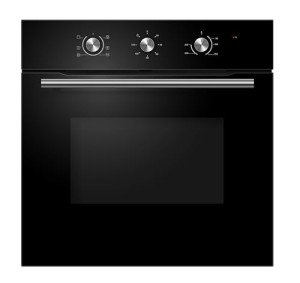A Brief History Of Integrated Hob And Oven In 10 Milestones
Integrating Cooking: A Comprehensive Guide to Integrated Hobs and Ovens
In the modern kitchen, performance combines seamlessly with style. An integrated hob and oven system exemplifies this blend, using both performance and aesthetic appeal. As home cooks seek ways to improve their cooking spaces, understanding the benefits and features of integrated hobs and ovens ends up being important. This short article digs into the various aspects of integrated cooking appliances, supplying insights into their benefits, installation factors to consider, and upkeep pointers.
What is an Integrated Hob and Oven?
An integrated hob and oven setup describes the style in which the cooking hob (the surface area on which pots and pans are put to cook food) and the oven (the device used to bake, roast, and broil) are created to fit effortlessly into kitchen cabinet systems. This cohesive style not just conserves space however likewise enhances the visual harmony of the kitchen.
Key Features of Integrated Hobs and Ovens
- Area Efficiency: These appliances are developed to fit within standard cabinetry, enhancing kitchen space while enabling more storage options.
- Trendy Appearance: Integrated designs offer a streamlined, contemporary appearance that can raise any kitchen's aesthetic.
- Enhanced Functionality: Many integrated systems come with advanced functions such as induction cooking, self-cleaning ovens, and smart innovation compatibility.
- Better Usability: Placing the hob at an appropriate height and having the oven conveniently positioned below can enhance cooking ergonomics.
Benefits of Integrated Hobs and Ovens
The growing choice for integrated hobs and ovens emerges from several associated benefits:
1. Space-Saving Design
- Integrated appliances get rid of the need for large standalone systems.
- They permit more counter area, creating a practical office for cooking.
2. Aesthetic Cohesion
- Integrated systems can be completed to match kitchen cabinetry, providing a smooth and unified look.
- The kitchen can keep a minimalist style, without visual clutter.
3. Superior Functionality
- Features like touch controls, timers, and automated cooking programs can improve the cooking experience.
- Induction hobs can offer quicker cooking times and more accurate temperature control compared to conventional gas or electric hobs.
4. Energy Efficiency
- Numerous modern integrated ovens come with improved insulation and energy-efficient features, minimizing energy intake.
- Induction hobs utilize energy directly in the pots and pans, leading to less heat loss and faster cooking.
Setup Considerations
When thinking about an integrated hob and oven, numerous elements should be evaluated during installation.
1. Space Measurements
- Kitchens Layout: Ensure the measurements of the readily available area accommodate both the hob and oven.
- Ventilation: Adequate ventilation is crucial to prevent getting too hot and make sure effective operation, especially with gas designs.
2. Electrical and Gas Connections
- Power Supply: Verify that the kitchen's power supply meets the appliance requirements (voltage, amperage).
- Gas Lines: For gas hobs, professional installation might be needed to ensure safety.
3. Modification and Finishes
- Choose finishes that match kitchen interiors, such as stainless steel, glass, and even custom kitchen cabinetry to hide the appliances.
4. Availability
- Guarantee that both the hob and oven are easily reachable. An ergonomic setup will boost the cooking experience and make it more secure.
Integrated Hob and Oven Models
Design
Type
Secret Features
Cost Range
Bosch Series 4 HBG634BBR
Built-In
Wi-Fi connectivity, numerous cooking modes
₤ 1,200 – ₤ 1,500
Samsung NZ48K7570UG
Induction
Flex zone, wise technology, touch controls
₤ 1,500 – ₤ 2,000
Miele H 6260 BP
Built-In
Self-cleaning, automatic programs, streamlined style
₤ 2,500 – ₤ 3,500
NEFF B57VR22N0
Multifunction
Slide&& Hide door, advanced heat circulation
₤ 2,000 – ₤ 2,500
Maintenance Tips
To take full advantage of the life and functionality of integrated hobs and ovens, correct upkeep is important:
- Regular Cleaning: Clean the hob and oven frequently to prevent accumulation from spills and food residues. Usage non-abrasive cleaners to secure surface areas.
- Check Seals and Gaskets: Check oven door seals to make sure efficient heating and prevent energy loss.
- Look for Damage: Regularly examine gas pipes, electrical cable televisions, and connections for wear or damage. Immediate repair or replacement is crucial for safety.
- Follow Manufacturer's Guidelines: Adhere to the specific maintenance guidelines provided by the maker for ideal efficiency.
Frequently asked questions
1. Can I install an integrated hob and oven myself?
- While some house owners go with DIY setup, it is suggested to employ an expert, specifically when gas connections or electrical circuitry are involved.
2. Are integrated hobs and ovens energy-efficient?
- Many modern integrated systems are created with energy efficiency in mind, featuring thermal insulation and energy-saving modes.
3. What is the very best product for an integrated hob and oven?
- Stainless steel is popular due to its sturdiness, ease of cleaning, and resistance to corrosion. However, built-in oven and induction hob package and enamel-coated choices also offer aesthetic appeal.
4. How do I troubleshoot typical issues with integrated hobs and ovens?
- Refer to the user manual for fixing standards. Fundamental issues like power failures or uneven cooking may frequently be dealt with through simple modifications or resets.
An integrated hob and oven system uses a combination of functionality and design that lines up with modern-day kitchen designs. By comprehending the benefits, setup requirements, and upkeep pointers related to these appliances, house owners can make informed choices that improve their cooking experiences. As cooking areas evolve into multifunctional spaces, integrated cooking solutions will continue to acquire appeal, shaping the future of cooking areas.
